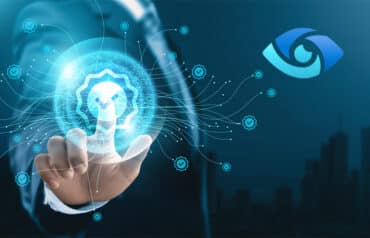With more than 200 sessions and 200 exhibitors, the International Legal Technology Association’s Annual Conference represents the leading edge of technology in the legal profession — and generates plenty of post-show attention in the blogosphere. For this week’s Friday Five, we asked attorney and legal technologist Scott Giordano to bring back his impressions.
I attended ILTA’s 36th Annual Conference in Las Vegas last week and had the chance to speak to analysts, vendors, journalists and attendees. Following are a few key trends and developments that captured my attention while at the conference.
1. Information governance was (once again) the topic du jour. Information governance (IG) was a popular topic, with over six sessions addressing some aspect of it, ranging from enterprise content management to storage technologies. IG is infused into so much of an enterprise’s or law firm’s daily business. In particular, both are rapidly adopting cloud computing and bring your own device (BYOD) tactics, often faster than those responsible for IG can catch up with appropriate policies for document retention. But because IG crosses so many departmental boundaries, getting the budget to solve IG-related issues is getting easier than for department-specific ones.
2. Multinational e-discovery is not getting any easier (and is likely to get harder). Moving electronically stored information (ESI) out of Europe to the U.S. for litigation is not easy. It’s likely to get harder in the wake of revelations that the U.S. government (specifically, the NSA) has been examining email traffic of U.S. citizens in apparent violation of federal laws. The revelations have called into question the integrity of the U.S. Safe Harbor agreement, which is used to authorize movement of corporate email and files (considered personal data) to the U.S. Even before those revelations, a 95-page draft of proposed changes was introduced into the European parliament early in 2013 that would make moving such ESI even more difficult. This has provoked intense lobbying from U.S. companies and is perhaps the most significant e-discovery issue on the horizon, in my view.
3. The “email made in Germany” imbroglio. I follow the information security and privacy sector fairly closely, but I completely missed this one — an e-discovery industry analyst told me about it. After the revelations of NSA spying on the email of Americans, several email providers offering secure email shut down rather than risk having their email traffic scrutinized. Shortly thereafter, three major email providers headquartered in Germany announced that they would be offering encryption for all email traveling through their networks, dubbed “Email made in Germany.” Ars Technia (one of my go-to blogs on IT) eviscerated the idea, noting that the offering didn’t protect data in storage, and it didn’t protect it from German authorities (who could conceivably copy it and turn it over to U.S. authorities).
4. Document clustering. As much as I am enamored with supervised machine-learning technologies (variously called predictive coding, TAR, predictive intelligence, etc.), there are other tools emerging in the analytical box that maintain their relevance. One journalist I spoke with indicated that “text analysis” — having a program look for patterns in document sets and cluster documents according to relevance — is a solid complement to supervised machine learning. One benefit of text analysis is that you don’t have to review any documents before you apply the technology and can do so earlier in the course of the matter.
5. New forensic challenges for e-discovery. Computer forensics professionals laid the groundwork for the e-discovery industry in the 1980s and ’90s, primarily in the context of criminal prosecutions. E-discovery service bureaus leverage these professionals routinely for collecting ESI, especially when the matters involve some question of the integrity of the ESI being requested, such as in matters of IP theft or occupational fraud. Over time, the technology has changed, and the idea of a forensic examiner “undeleting” a document seems to be evaporating. Solid state drives (SSDs), for example, don’t have so-called “slack space” where examiners can look for evidence, like they can with traditional hard drives. SSDs are used in mobile devices and laptops and, as such, are slowly eclipsing the hard drive. It seems that traditionally recoverable ESI is simply not going to be available in many cases. This is going to be, I suspect, a big challenge for forensics professionals to resolve. Mobile devices also don’t create “shadow volumes,” which are copies of the computer’s operating system, another source of evidence for examiners. Add to this the migration of data to the cloud, and forensic examiners will have their work cut out for them in finding evidence of ESI spoliation and recovering key documents that may have been deleted.
Scott Giordano is an attorney with more than 16 years of legal, technology and risk management consulting experience. Holding both Information Security Systems Professional (CISSP) and Certified Information Privacy Professional (CIPP) certifications, Giordano serves as Exterro’s subject matter expert on the intersection of law and technology as it applies to e-discovery, information governance, compliance and risk management issues.















